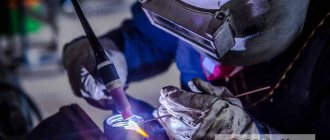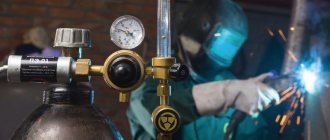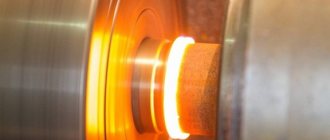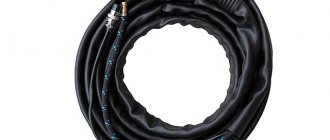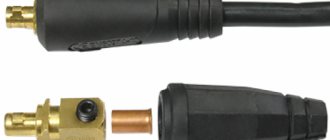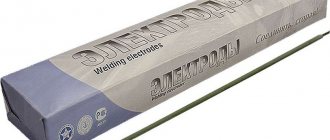The method works with single-mode and multimode fiber lasers
The shift to the adoption of lighter, stronger materials in everyday products, from automobiles to consumer electronics, has led to a number of serious problems in welding these structures, especially in high-volume production environments. Examples in the transportation industry include electric vehicle infrastructure, where battery production often requires joining dissimilar, highly reflective materials such as aluminum and copper.
Another related example is the continued use of high-strength steels and aluminum and magnesium composites to reduce vehicle weight. In consumer electronics, the requirement for lightweight designs with high individual thermal and electrical properties continually drives the need for more complex designs, often using thin foil and requiring the joining of dissimilar metals, as well as aluminum and copper, which are very different materials. The medical device industry also necessitates the interconnection of small metal parts, often with dissimilar materials.
The growth of laser welding has continued for over a decade, and the automotive industry, the earliest adopter of the technology, is the first to see the benefits of an automated welding process combined with the inherent benefits of fiber laser technology. However, problems with laser welding of many of the previously described materials remained significant and may explain the slow rate of adoption of laser welding in some applications.
Recently, the introduction of new, cost-effective and easy-to-use technology based on beam oscillation technique is helping to overcome some of these difficulties in welding materials such as copper and aluminum with high-power 1 µm fiber lasers. This method helps overcome porosity and hot cracking problems in laser welding of some materials, thereby helping to simplify assembly fit requirements by a factor of 3-X in some of the examples discussed in this article. With the ability to independently control penetration depth, focused spot oscillation speed, welding speed and weld width, the technique is suitable for welding small, temperature-sensitive assemblies (for medical parts), poorly fitting parts that may have difficulty with conventional laser welding and may be cosmetically attractive when welding with vibrations without the need for post-processing.
Technology
physical characteristics
Laser welding of metals differs from other types of welding technologies in its high energy density in the heating spot - up to 1 MW per sq. cm. This ensures a high rate of heating and cooling of the weld zone, which significantly reduces the thermal effect on the heat-affected zone. Therefore, the welding process does not cause structural changes in the material, leading to softening, deformation and cracking.
The size of the focusing spot of an industrial installation can vary from 0.2 to 13 mm. The depth of material penetration is directly proportional to the laser radiation energy, but also depends on the location of the focal plane of the beam. During a welding operation, a zone of molten material is mixed along a predetermined path with a laser beam, creating a weld along the line of motion. It turns out to be narrow and deep, so its shape is fundamentally different from the welds of other welding technologies.
Types and modes of laser welding
Laser welding technology includes two types of welding joints: spot and seam. In this case, industrial installations can generate two types of laser radiation: continuous and pulsed. For a point connection, only pulsed radiation is usually used, and for a suture connection, both continuous and pulsed radiation are used. In the second case, the weld is formed by overlapping pulsed heating zones, so the welding speed depends on the pulse frequency. Spot welding is usually used to join thin metal parts, and seam welding is used to form deep welds.
Hybrid laser welding refers to welding technologies that use filler materials. In this case, welding equipment is supplemented with wire, tape or powder feed mechanisms. Filler materials are fed into the melting zone synchronously with the movement of the welding head, and their thickness corresponds to the width of the weld and the diameter of the spot.
Technological features
The speed of movement and energy modes of the welding process depend on the width of the weld, as well as on the type and thickness of the materials being welded. For example, steel sheets 20 mm thick are welded with a gas laser at a speed of several hundred meters per hour. This figure is an order of magnitude higher than the limiting characteristics of electric arc welding.
Laser technology is especially effective when working with alloy steels, cast iron, titanium, copper, copper alloys, thermoplastics, glass and ceramics. The high energy density in the heating spot destroys surface oxide films, preventing the formation of new oxides. This allows laser beam welding of titanium, aluminum and stainless steel without the use of fluxes or inert gases.
Recommendations
- Carey and Helzer, page 210
- Cieslak, M. (1988). "On the weldability, composition and hardness of pulsed and continuous Nd:YAG laser welding of 6061, 5456 and 5086 aluminum alloys". Metallurgical operations
B.
9
(2): 319–329. Doi:10.1007/BF02654217. S2CID 135498572. - Weman, page 98
- Reinhart, G., Münzert, U. and Vogl, W., 2008. A programming system for robotic remote laser welding with conventional optics. CIRP Annals-Manufacturing Technology, 57(1), pp.37-40.
- Kim, P., Rhee, S. and Lee, K. H., 1999. Automatic training of welding robot for free-form seam using laser vision sensor. Optics and lasers in technology, 31 (3), pp.173-182.
- Cline, H.E.; Anthony, T. R. (1977-09-01). "Thermal treatment and melting of a material by a scanning laser or electron beam." Journal of Applied Physics
.
48
(9):3895–3900. doi:10.1063/1.324261. ISSN 0021-8979. - Sabbaghzadeh, Jamshid; Azizi, Maryam; Torkamani, M. Javad (2008). "Numerical and experimental study of pulsed laser seam welding." Optics and laser technologies
.
40
(2):289–296. doi:10.1016/j.optlastec.2007.05.005. - "Open Source Laser System for Polymer Welding - Appropedia: The Sustainability wiki." www.appropedia.org
. - John J. Laureto, Sergei V. Dessiatun, Michael M. Ohadi, and Joshua M. Pierce. Open source polymer laser welding system: design and characterization of linear multi-layer low-density polyethylene welds. Machines
2016,
4
(3), 14; DOI: 10.3390/machines4030014 - Carey and Helzer, page 209
- ^ a b c d
Steen, William M.;
Mazumder, Jyotirmoy (2010). Laser processing of materials |
SpringerLink . Doi:10.1007/978-1-84996-062-5. ISBN 978-1-84996-061-8. - Cieslak, M. (1988). "On the weldability, composition and hardness of pulsed and continuous Nd:YAG laser welding of 6061, 5456 and 5086 aluminum alloys". Metallurgical operations
B.
9
(2): 319–329. Doi:10.1007/BF02654217. S2CID 135498572. - ^ a b c d
Lee, Jae Y.;
Ko, Sung H.; Farson, Dave F.; Yu, Chung D. (2002). "The mechanism of keyhole formation and stability during stationary laser welding." Journal of Physics D: Applied Physics
.
35
(13): 1570. doi:10.1088/0022-3727/35/13/320. ISSN 0022-3727. - ^ a b c d f f
Chen, Gibo;
Gu, Xiuying; Bi, Juan (2016). "Numerical Analysis of Thermal Effect in Aluminum Alloy Using PRF Pulsed Laser". Optik - International Journal of Light and Electron Optics
.
127
(20):10115–10121. doi:10.1016/j.ijleo.2016.08.010. - ^ a b c d e
Frewin (January 1999).
"Finite element model of pulsed laser welding." Welding journal
.
78
: 15–2. - Cline, H.E.; Anthony, T. R. (1977-09-01). "Thermal treatment and melting of a material by a scanning laser or electron beam." Journal of Applied Physics
.
48
(9):3895–3900. doi:10.1063/1.324261. ISSN 0021-8979. - Sabbaghzadeh, Jamshid; Azizi, Maryam; Torkamani, M. Javad (2008). "Numerical and experimental study of pulsed laser seam welding." Optics and laser technologies
.
40
(2):289–296. doi:10.1016/j.optlastec.2007.05.005.
Bibliography
- Carey, Howard B. and Scott K. Helzer (2005). Modern welding technologies
. Upper Saddle River, NJ: Pearson Education. ISBN 0-13-113029-3. - Veman, Claes (2003). Handbook of Welding Processes
. New York: CRC Press LLC. ISBN 0-8493-1773-8. - Kalpakjian, Serop and Schmid, Stephen R. (2006). Production and technology
5th ed. Upper Saddle River, NJ: Pearson Education. ISBN 0-13-148965-8
Composition and operating principle of welding equipment
All laser welding installations consist of the following functional modules:
- technological laser;
- radiation transport system;
- welding head with focusing lens;
- beam focusing unit;
- mechanisms for moving the welding head and workpiece;
- control system for movement, focusing and laser power.
In welding equipment, two types of lasers are used as radiation generators: solid-state and gas. The power of the former ranges from tens of watts to 6 kW, and of the latter – from units to 25 kW. In solid-state installations, the emitter is a transparent rod of ruby or yttrium aluminum garnet doped with neodymium. And in gas apparatus there is a transparent tube filled with carbon dioxide or gas mixtures.
In addition to the emitter, any laser includes a pump system, an optical cavity, a power supply and a cooling system. The generated light flux passes through the front mirror of the optical resonator to a system of mirrors, which transmits it to the focusing lens of the welding head.
Laser welding machines are available in different configurations: from traditional gantry or console machines with work tables to robotic manipulators with five degrees of freedom. Welding equipment can be controlled manually or automatically. If the installation has a CNC system, then the welding process is carried out automatically according to a given program. In the case of manual laser welding, the operator sets the movements, speeds and parameters of the welding process from a remote control panel.
general characteristics
Laser welding is actively used on an industrial scale to form high-precision and permanent connections.
During laser welding of metal products, special equipment is used, which, with the necessary skills and correctly selected settings, ensures high quality fixation and a neat seam.
Fig.1. Laser welding of metal products
The process of this technology ensures the transformation of the metal element at the junction. The laser beam promotes the process of heating and further melting in the treated area. The laser creates a luminous flux with characteristic monochrome.
The wavelengths are identical. This simplifies the control of flows when focusing lenses or deflecting working prisms. The starting power increases due to the appearance of wave resonance.
The following welding machines are used for laser welding:
- robotic (work without human presence and control);
- automatic;
- semi-automatic.
All three types are characterized by the formation of a laser beam, which affects a certain area and is capable of heating and melting the metal on it.
Application of laser welding
The main area of application of laser welding is in advanced production with innovative technologies. It is most widely used in microelectronics, instrument making, aerospace, nuclear energy and the automotive industry.
In instrument making and microelectronics, lasers are used to connect dissimilar and different-thickness materials with diameters ranging from microns to tenths of a millimeter. In addition, laser technology makes it possible to weld elements located at close distances from microcircuit crystals, as well as other heat-sensitive elements.
The use of lasers in the automotive industry is not limited to precision welding of body parts made of thin sheet steel. To reduce weight, modern cars are increasingly using parts made of aluminum and magnesium alloys. A characteristic feature of these materials is the presence of a surface oxide film with a high melting point. Therefore, laser welding is most often used to connect them.
Laser welding of car body
In shipbuilding, the defense industry, nuclear energy and the aerospace industry, components made of titanium and titanium alloys are widely used. Welding titanium is one of the most challenging tasks in the welding industry. In the molten state, titanium has high chemical reactivity to oxygen and hydrogen, which leads to saturation of the melt zone with gases and the formation of cold cracks. Laser welding successfully copes with this problem when working in a protective environment of a gas mixture based on argon and helium.
Advantages and disadvantages
Laser welding has a number of undeniable advantages, but, like all welding technologies, it has its drawbacks. The former are a consequence of the unique characteristics of the laser beam, while the latter are mainly associated with the high cost and complexity of the equipment.
Main advantages:
- the ability to weld a variety of materials: from metals and magnetic alloys to thermoplastics, glass and ceramics;
- high accuracy and stability of the heating spot trajectory;
- the smallest weld seam size among all welding technologies;
- absence of heating of the heat-affected zone, resulting in minimal deformation of the parts being welded;
- absence of combustion products and x-ray radiation;
- chemical purity of the welding process (additives, fluxes, and electrodes are not used);
- the ability to weld in hard-to-reach places and at a great distance from the laser location;
- the ability to weld parts located behind transparent materials;
- quick changeover when switching to the production of a new product;
- high quality welded joints.
Main disadvantages:
- high cost of equipment, spare parts and components;
- low efficiency (for solid-state lasers - about 1%, for gas lasers - up to 10%);
- dependence of the efficiency of the welding process on the reflectivity of the workpiece;
- high requirements for the qualifications of service personnel;
- special requirements for premises for placing laser equipment (in terms of vibration, dust and humidity).
Content
- 1 Operation
- 2 Equipment 2.1 Automation and CAM
- 2.2 Lasers 2.2.1 Solid state
- 2.2.2 Gas
- 2.2.3 Fiber
- 3.1 Step 1
- 4.1 Bibliography
